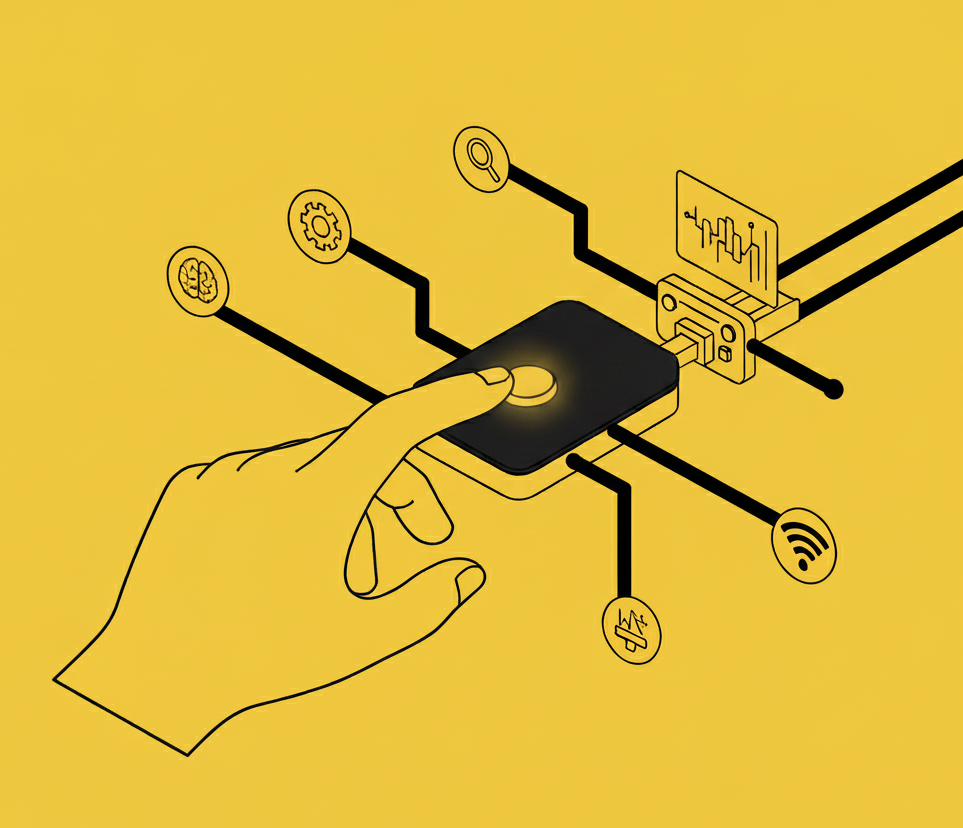Connected products are everywhere, but not all of them are a pleasure to use. The embedded systems industry has long focused on technical performance (faster processors, smaller form factors, and lower power consumption). While critical, this focus often overlooks the most important element: the human user.
This is where human-centred engineering comes in. It’s an approach that puts the end- d context at the heart of the design process. The goal is to move beyond simply building a device that works to creating one that feels intuitive, valuable, and seamless. In today’s market, a device’s success is measured not just by its specs, but by its adoption and continued use.
Why Human-Centered Design is Now a Core Technical Requirement
In the past, poor user experience was a frustrating but often accepted part of new technology. Today, a clunky interface or confusing setup can tank a product. With fierce competition and low switching costs, a device that isn’t easy to use will be quickly abandoned.
This isn’t a “soft skill”, it’s a technical imperative. When you prioritize user experience, you are directly addressing key engineering challenges:
- Reducing Support Costs: A device with an intuitive interface and clear feedback loops leads to fewer support calls and returns.
- Improving Data Quality: If a sensor or wearable is uncomfortable or difficult to use, people won’t wear it correctly, leading to unreliable data.
- Enhancing Security: Confusing security settings lead users to bypass them, creating vulnerabilities. Human-centered design can make strong security practices feel natural and effortless.
- Accelerating Feature Adoption: When new features are introduced via OTA (Over-The-Air) updates, a well-designed user experience ensures people discover and use them.
The Core Principles of Human-Centered Embedded Design
Building a human-centered embedded device requires a shift in mindset and a few key principles to follow throughout the engineering lifecycle:
1. Understand the User’s Real-World Context
Go beyond functional requirements. How will the device be used? Will it be in a noisy environment, used by someone with limited tech skills, or operated with gloves on? Conducting user research, creating personas, and building journey maps helps you design for these realities. A great thermostat, for example, prioritizes simple, tactile controls for quick adjustments, while more complex scheduling is handled via a connected app.
2. Design for Low-Effort Interactions
The most elegant solutions are often invisible. This means prioritizing on-device intelligence and automation to reduce user burden. A smart home sensor should “just work” without requiring constant calibration. An industrial device should provide clear, immediate feedback, so an operator knows if the system is running correctly at a glance.
3. Prioritize Robust and Clear Feedback
Embedded devices can’t always display a complex error message. Use a combination of tactile, visual, and auditory cues to communicate status. A simple LED color change, a distinct sound, or a vibration can instantly tell a user if a command was received, a connection was lost, or a battery is low. This feedback builds trust and reduces guesswork.
4. Build a Seamless Hybrid Experience
Today’s embedded systems are rarely stand-alone. They are part of a larger ecosystem that includes mobile apps and cloud services. The transition between the physical device and its digital twin must be seamless. A user should be able to set a schedule on their phone and see the changes reflected on the device instantly. The data collected by the device should be presented in an actionable, easy-to-understand way in the app.
Practical Steps for Engineers
Making this shift isn’t just about hiring a UX designer; it’s about integrating these principles into your engineering workflow:
- Begin with UX: Start the design process by mapping the user journey, not by choosing a microcontroller.
- Use Hardware-in-the-Loop (HIL) Testing: Test your firmware against a physical representation of the user interface as early as possible. This helps uncover usability issues before the hardware is finalized.
- Create Test Rigs: Don’t just test the device in a lab. Set up a mock environment that simulates real-world conditions to validate the user experience.
- Iterate Based on User Feedback: Build a loop to collect feedback from early adopters and use that data to inform OTA updates and future product versions.
What we’re going to see moving forward
The future of embedded systems isn’t just in making them more powerful or connected, it’s in making them more human. By adopting a human-centered engineering approach, you move from simply building technology to creating products that people genuinely want to use, leading to higher adoption rates, greater customer loyalty, and long-term success in a competitive market.
FAQ
What is human‑centered engineering for embedded devices?
Applying human‑factors and context research to the full device–app–cloud stack so the product is obvious to use.
How do we raise OTA feature adoption?
Announce in‑product, spotlight new controls, and gate progressive rollout with telemetry.
Do we need a screen?
Not always. Multimodal feedback plus an app can outperform small, dense UIs.



